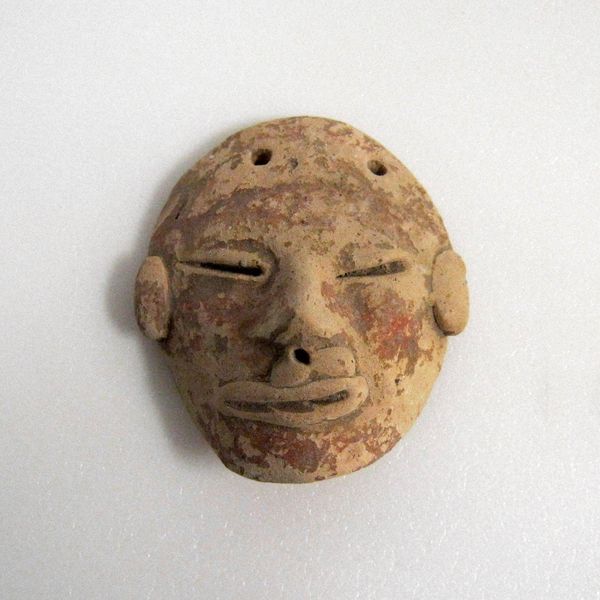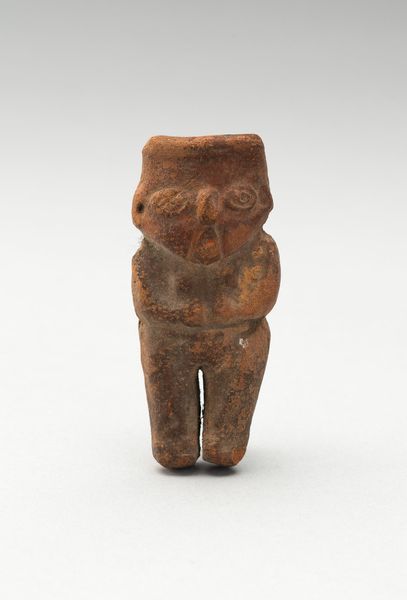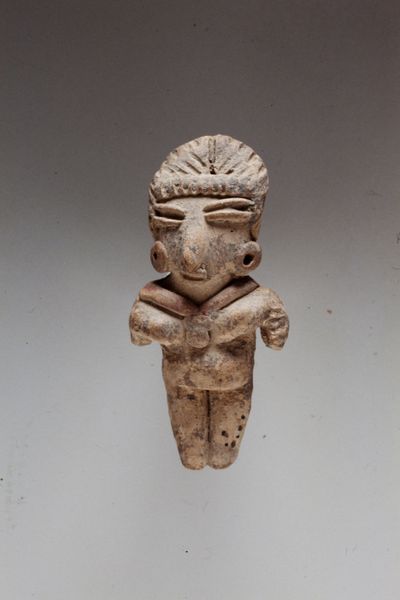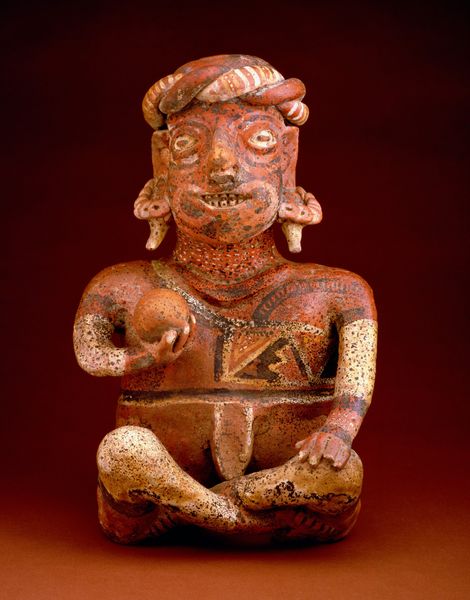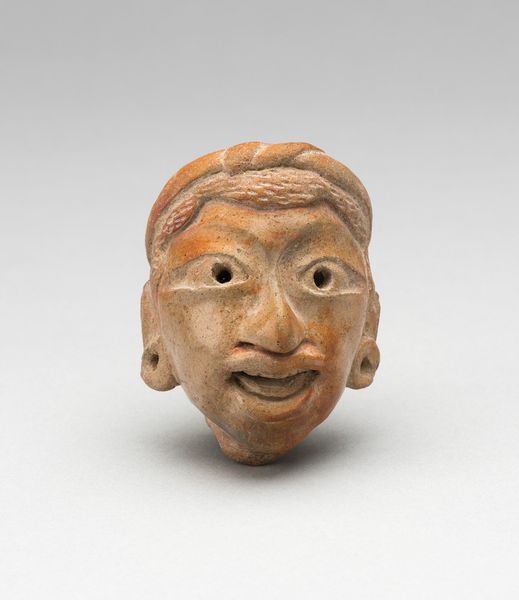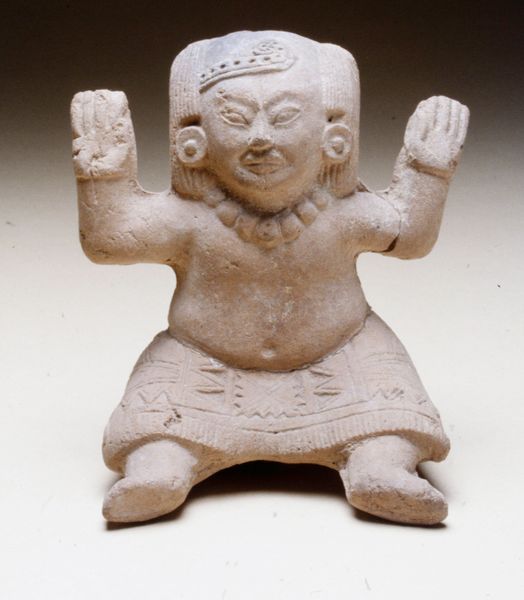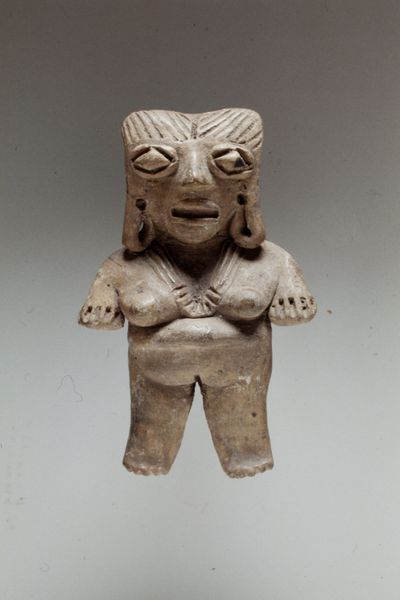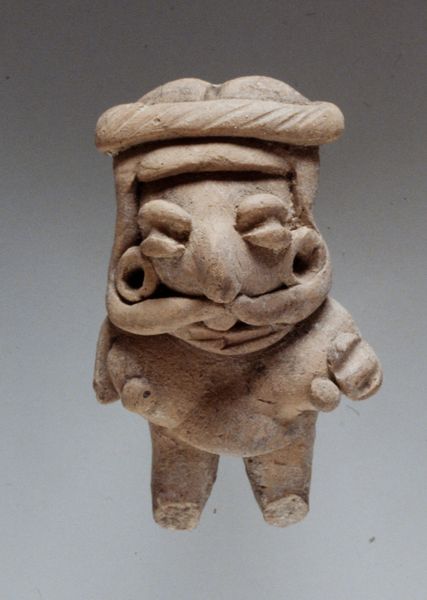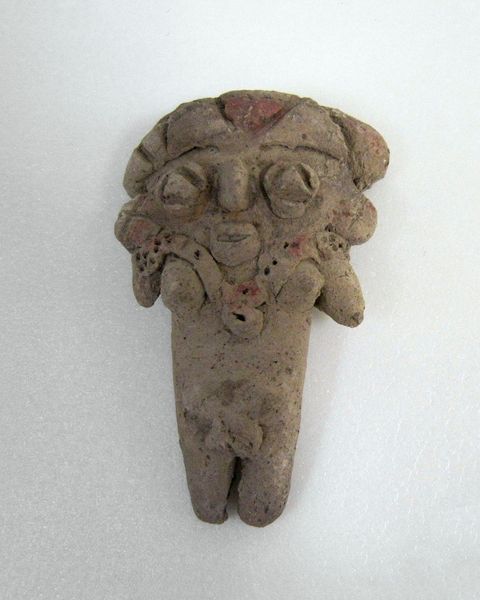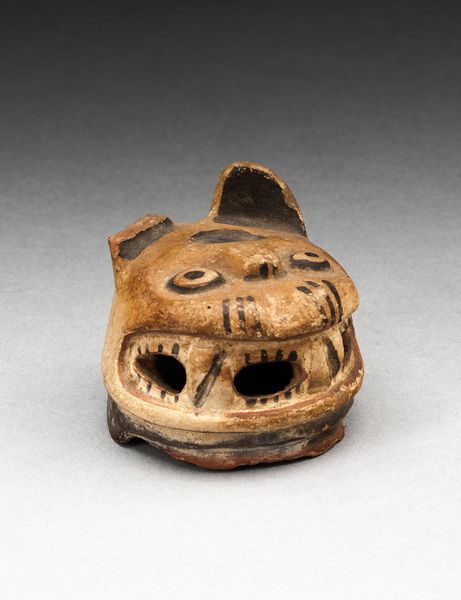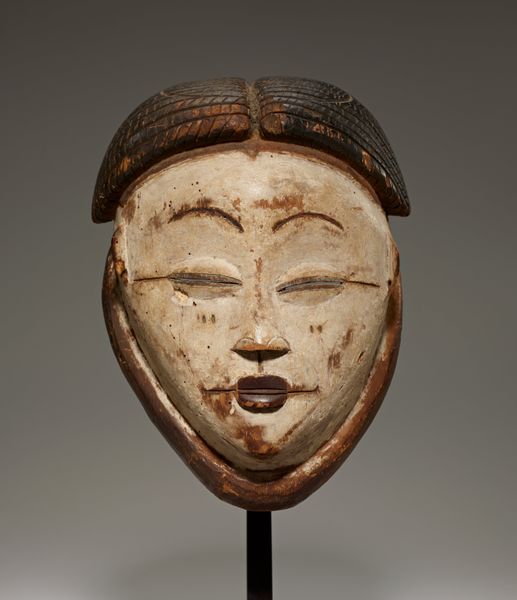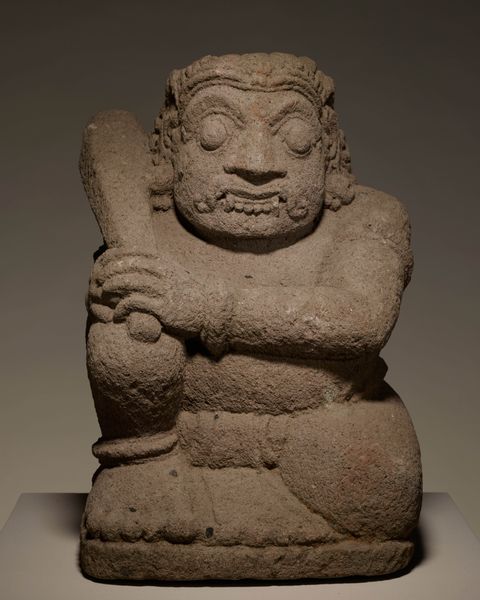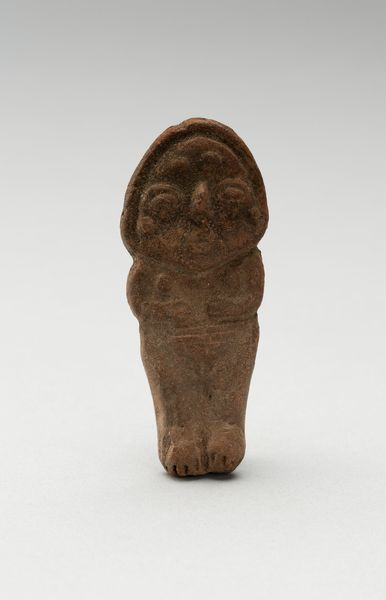
Ancient Greek Polychrome Antefix, Featuring a Gorgona 450 BC
0:00
0:00
carving, ceramic
#
carving
#
sculpture
#
greek-and-roman-art
#
ceramic
#
figuration
#
ancient-mediterranean
Copyright: Public domain
Curator: What a striking face! Is this terracotta? It has such a rough, almost confrontational presence. Editor: Yes, it’s terracotta. What you are observing is an Ancient Greek Polychrome Antefix featuring a Gorgona, dating back to approximately 450 BC. These ceramic pieces were functional architectural elements, placed along the eaves of buildings to protect the roof tiles. Curator: So this wasn't displayed inside, it was on a rooftop? That's fascinating in itself! The Gorgon’s grimace, the way her tongue sticks out... it’s all so deliberate. And functional—it had to withstand the elements. Do we know much about who crafted it? Was it a specialized craftsperson, or were such things more communal activities? Editor: Our records suggest workshops likely handled such production. Specialization in pottery was emerging. Mass production wasn’t common as we know it today, but efficiencies were certainly sought, likely through a workshop system, though names, inevitably, are long lost. Curator: It raises interesting questions about the relationship between art and labour, high culture and utility. I mean, we display it in a museum now, divorced from its original context of protection. Editor: Indeed. Its removal transforms its meaning. We must consider how powerful families or political systems benefited from using dramatic public imagery such as the Gorgons to exert power and promote narratives, and how that influenced the public’s interaction with their civic spaces. It tells a rich tale of societal roles and symbolism. Curator: So more than mere decoration, it becomes about managing perception and ensuring cultural stability through visual intimidation... even now, this Gorgon demands attention! Thank you. Editor: My pleasure, it's a reminder that context is vital, not only for its historical framework, but also for challenging and re-examining our contemporary perspectives.
Comments
No comments
Be the first to comment and join the conversation on the ultimate creative platform.
